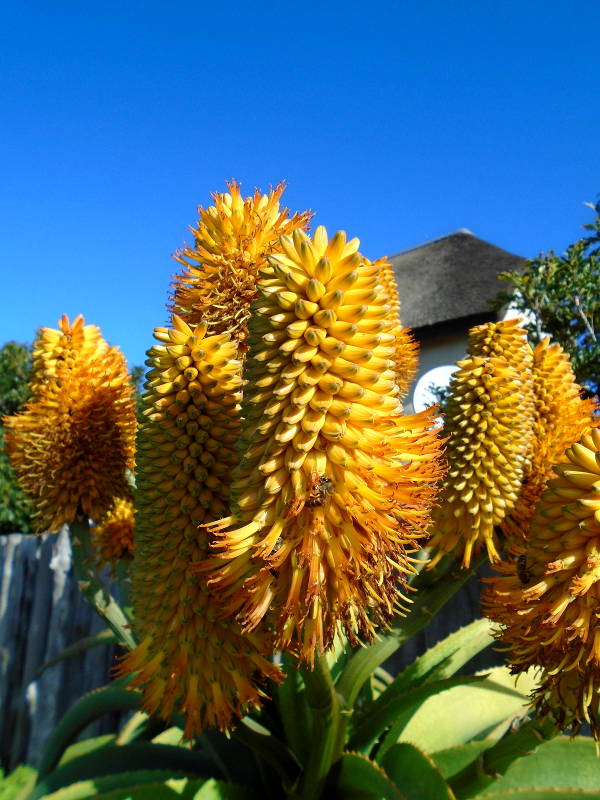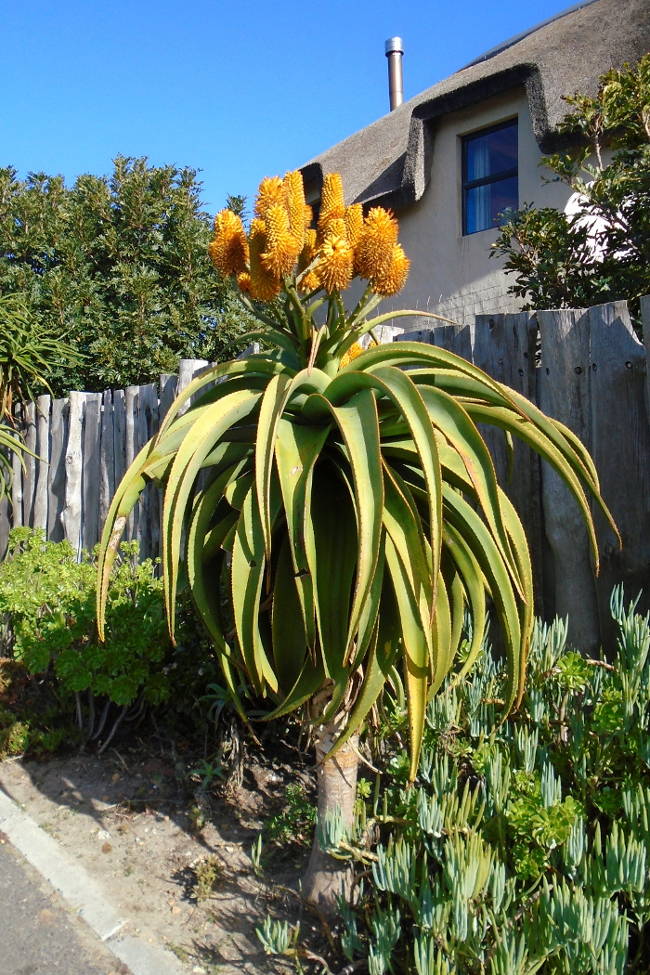Aloe There
6 June, 2020
All the aloes are in full bloom right now and it makes me so happy. The bees are pretty stoked about it too, as are the sunbirds.
As nectar is a primary food source for sunbirds, they are important pollinators in African ecosystems. Sunbird-pollinated flowers are typically long, tubular, and red-to-orange in colour, showing convergent evolution with many hummingbird-pollinated flowers in the Americas. A key difference is that sunbirds cannot hover, so sunbird-pollinated flowers and inflorescences are typically sturdier than hummingbird-pollinated flowers, with an appropriate landing spot from which the bird can feed.
This is likely Aloe ferox, though it should be said that I’m still learning to differentiate species. It’s categorised as a solitary, non-branching tree aloe. There is another one nearby which is easily 5-6 meters tall. Some species have yellow flowers, while others are orange, red or pink. They are wonderful neighbours. I think I will devote a good portion of my life to caring for aloes and learning more about them. If my spirit has a colour, it is that of the flowers above.
